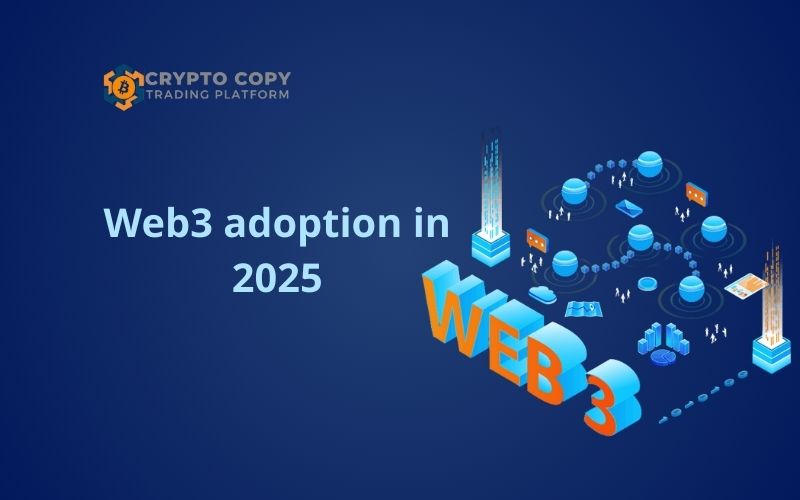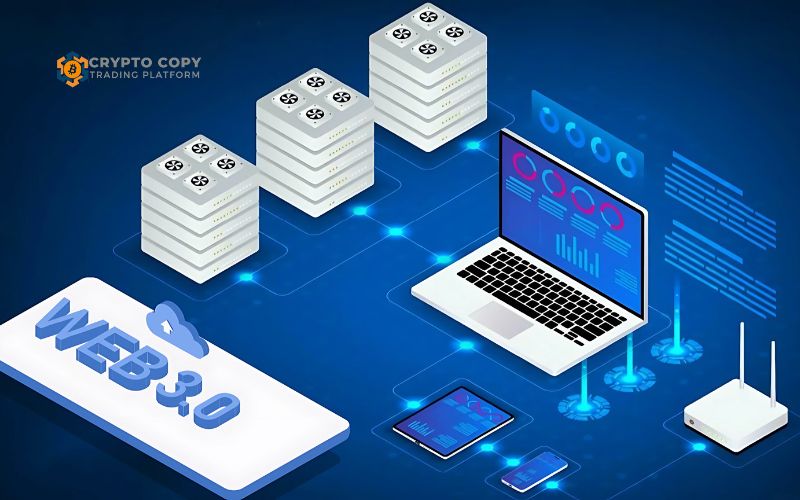Amid the rapid development of blockchain technology and cryptocurrencies, web3 adoption in 2025 is becoming a hot topic, attracting the attention of many businesses and investors worldwide. The year 2025 promises to be a pivotal milestone, as Web3 moves from being a distant concept to becoming an essential foundation for various industries such as finance, entertainment, and social media.
Contents
Breakthrough growth in Web3 adoption in 2025

Web3 is entering a booming phase, shifting rapidly from experimental stages to real-world applications. Decentralized applications (dApps) are no longer confined to developer communities, they are increasingly integrated into familiar sectors such as gaming, decentralized finance (DeFi), and social networks. Thanks to major improvements in next generation blockchain technologies, processing speed, security, and user experience have significantly advanced, paving the way for Web3 to reach a mainstream audience.
Moreover, the emergence of AppChains and modular blockchain architectures allows projects to be customized and scaled more easily. This is especially important for reducing costs, improving performance, and enhancing the ability to integrate various Web3 services into digital life. These factors are actively driving web3 adoption in 2025 to become a breakthrough trend, paving the way for the sustainable development of the decentralized ecosystem.
The role of Zero-knowledge technology in Web3 adoption in 2025
Zero-Knowledge (ZK) technology is emerging as a core driver of Web3 adoption in 2025. By enabling verification of information without revealing specific data, ZK provides a superior level of privacy for blockchain users. This is especially crucial as users increasingly value privacy and security when engaging in decentralized transactions.
One of the standout applications of this technology is zkRollups, which allows for the efficient processing of multiple off-chain transactions with the results recorded on the main chain. Additionally, zkEVMs are paving the way for more efficient smart contracts without compromising security. These technologies significantly enhance transaction speed and reduce gas fees, thereby improving user experience within the Web3 ecosystem.
Beyond DeFi, the potential of ZK extends to various sectors such as supply chain management, healthcare data security, and digital identity. The integration of ZK technology into Web3 systems is opening doors to a more decentralized, secure, and flexible digital world. This forms a solid foundation for Web3 to move closer to mainstream adoption in 2025.
Practical applications of Web3 adoption in 2025
Web3 is gradually affirming its position across various sectors thanks to its decentralized nature, transparency, and high security. The adoption of Web3 has moved beyond theory, with numerous real-world applications now delivering tangible value to both daily life and business. Below are some key areas actively implementing and benefiting from Web3 adoption in 2025:
- Decentralized finance (DeFi): Web3 paves the way for financial transactions without intermediaries, allowing users to save, borrow, lend, and trade tokens transparently and efficiently through platforms like Uniswap, Aave, and Compound. This reduces costs, increases transparency, and provides financial access to millions of unbanked individuals.
- Gaming and digital assets (NFTs): Blockchain based games such as Axie Infinity and StepN use NFTs to grant players ownership of in-game assets. This not only enhances the gaming experience but also creates a new economy where users can “play-to-earn” and trade digital assets in an open, transparent environment free from centralized control.
- Decentralized social networks: Platforms like Lens Protocol and Farcaster are building social networks where users have full control over their content, identity, and personal data. Without arbitrary censorship or data exploitation, users benefit from privacy protection and the potential to earn from their own content.
- Supply chain management: Thanks to blockchain’s immutability and transparency, businesses can track and verify logistics, origin, and product quality in real-time. This improves trust in transactions, reduces fraud, and boosts efficiency in supply chain operations.
- Digital identity systems: Web3 enables the development of digital identity solutions like Soulbound Tokens (SBTs), which allow individuals to verify their identity or achievements without exposing all their private information. These systems lay the groundwork for secure access to technological, financial, or educational services in the future.
The future vision of Web3 adoption in 2025

Web3 adoption in 2025 is not just a short-term trend but is reshaping the future of the entire digital space. The shift from Web2 to Web3 is becoming increasingly evident as users demand more control over their personal data, transparency in transactions, and greater freedom in digital interactions. Large organizations and enterprises are beginning to integrate Web3 solutions into their operations to improve efficiency, reduce reliance on intermediaries, and engage with customers in entirely new ways. This evolution is turning Web3 from a developer centric technology into a widely accessible tool for global communities.
In the near future, Web3 is expected to establish a comprehensive digital ecosystem, where financial services, entertainment, education, and public administration can all operate in a decentralized manner. Technologies such as Zero-Knowledge Proofs, AI-powered Web3 solutions, and modular blockchain networks will play a critical role in scaling infrastructure and enhancing user experiences. Furthermore, clearer regulatory frameworks from governments around the world will support the sustainable adoption of Web3, paving the way for it to become the core digital infrastructure of the global economy.
Challenges facing Web3 adoption in 2025
Unclear regulatory frameworks remain the biggest barrier to Web3 adoption in 2025. Many countries have yet to establish specific regulations for blockchain technology, cryptocurrencies, and decentralized applications (dApps). This creates hesitation among businesses, developers, and investors due to the lack of legal protection. Inconsistencies between regions also pose obstacles to scaling and attracting international investment.
Security and user experience are also weaknesses that need to be addressed. Although Web3 technology aims for safety and transparency, there are still numerous incidents of attacks on personal wallets, smart contracts, and decentralized exchanges. Additionally, the interfaces and operations of many Web3 applications remain quite complex, requiring users to have certain technical knowledge. This limits accessibility for newcomers and affects the broader adoption of Web3.
Environmental impact and operational costs are further challenges to consider. Some blockchains using energy-intensive consensus mechanisms like Proof of Work (PoW) have not yet been optimized. This not only harms the environment but also increases development costs. In a global context focused on sustainable development, Web3 must quickly adapt by adopting energy-efficient and eco-friendly solutions such as Proof of Stake (PoS) or modular blockchain technology.
Keep following Crypto Copy Trading Platform to discover the latest updates and in-depth analyses on Web3 and the blockchain projects that are making waves in the cryptocurrency market.
